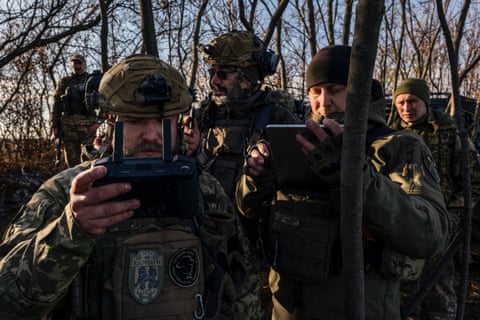On the edge of a copse, Danilo and two fellow soldiers stared intently at a screen. On it was a live video feed from a drone. “It’s quite simple to use. We put the drone up, call in an artillery strike and see where it lands. Then we adjust the position,” said Danilo, a member of Ukraine’s 63rd Mechanised Brigade.
The drone offered a panoramic view of the city of Snihurivka, occupied since the spring by Russian troops. There was an industrial estate, buildings and a grain silo, used by the enemy as a lookout point. The latest attack missed its target. “We were 300 metres off,” said Danilo, pointing to the feed that showed a puff of grey smoke.
The trio were standing next to a white satellite dish connected to Elon Musk’s Starlink system. Immediately behind them was a well-developed network of first world war-style trenches, dug beneath a line of bare autumn trees. For months the Russians were a mere kilometre away, hidden in civilian houses and dugouts.

On Wednesday, however, they were staging a withdrawal. The Kremlin was retreating from its positions in Snihurivka and other villages on the right bank of the Dnipro. The ruined city is in a sliver of Mykolaiv oblast, close to the administrative border with the Kherson region and the occupied city of Kherson.
Serhii Khlan, the deputy head of Kherson oblast council, said the Russian army had blown up all of the bridges over a tributary river, the Inhulets, including the Daryivskyi crossing. During the exit from Snihurivika, Russian forces had destroyed a bridge over an empty canal, turning it into an impassable concrete V shape.
“They are panicking,” said Khlan. “The occupiers are preparing their withdrawal. They are disabling the bridges to deter our advance.” The Russians had beefed up some of their positions on the road south of Snihurivka to give cover to departing troops, he added.
Russia’s defence minister confirmed his forces would soon be leaving right-bank Kherson, part of a territory Vladimir Putin “annexed” in September. In the meantime, the Ukrainian army pushed cautiously forward. Military traffic could be seen on the road to the frontline, including T-72 tanks on loaders and a US-supplied Himars long-range artillery system.
The war for the south of Ukraine was being conducted as a rhythmic aerial duel, across an autumnal steppe landscape. Every few minutes there was a loud “wump” from outgoing Ukrainian fire. Soon afterwards came an answering cascade of Russian Grad missiles: whoosh, whoosh, whoosh. They landed somewhere out of sight.
The surrounding sunflower fields are pitted with projectiles, sticking out of the ground like angry white hairpins. On Monday afternoon, a column of black smoke poured over the horizon. Danilo had hit a military target. “We got something. A fuel depot or a Russian armoured vehicle,” he said, taking a sip from a can of energy drink.

Moscow is reported to have sent 80,000 newly mobilised personnel into combat. Their task is to defend the territory Russia illegally seized in the spring, and follows a rapid Ukrainian counteroffensive in September and October in the north-eastern Kharkiv and Kherson regions. About 800 had arrived on the Mykolaiv front.
Ukrainian officers describe these recruits as untrained, clueless and easy to kill. “They are cannon fodder. One of them went to the toilet in the middle of the night using a flashlight. We identified their tank position and destroyed it,” said Lt Oleh Zelinskiy, a spokesperson for the 63rd Brigade.
“They try to shoot down our drones with automatic weapons. They don’t understand that drones can drop bombs. They are idiots,” he said. Russian soldiers who surrendered or got captured were treated humanely, he stressed, in contrast to the torture meted out to Ukrainian prisoners of war.
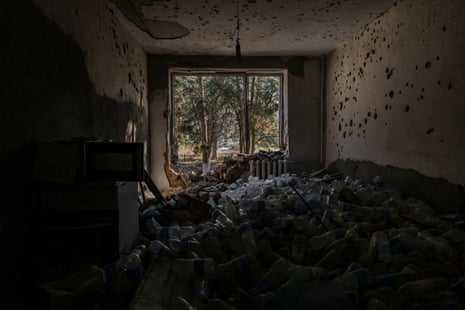
Zelinskiy said his brigade was also up against more experienced airborne troops, as well as fighters from the so-called Luhansk People’s Republic, sent from the eastern Donbas. These combined Russian forces have been building defensive positions around Kherson city while at the same time deporting residents to Crimea and beyond.
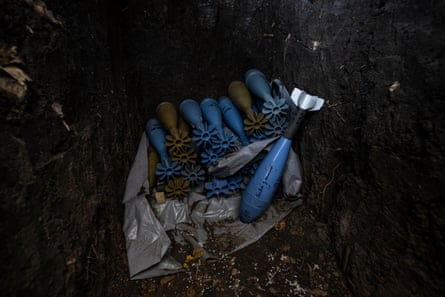
The first signs of a Russian retreat came two weeks ago, with reports of mass looting. Residents still living in Snihurivka said the Russians had taken away all the equipment from the city’s hospital. They had stolen private cars, artworks from Kherson’s museum, and the bones of Grigory Potemkin, Catherine the Great’s friend and lover, from his burial place in a cathedral crypt.
On Wednesday, the Russian flag was removed from Kherson’s maritime academy and trade union buildings, before the formal withdrawal announcement. Soldiers have sunk or confiscated boats. They have also moved out newer tanks and left behind older armoured vehicles. Draftees have been busy fortifying a fallback line on the Dnipro’s left bank.
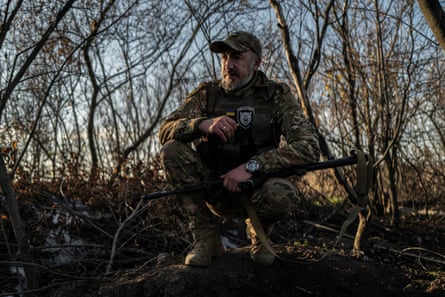
Moscow’s ministry of defence had claimed everything was going to plan. “All attacks by the Ukrainian army in the Kherson region have been repulsed,” it said, before Gen Sergei Surovikin, in overall command of the war, cited logistical difficulties. At the same time, pro-Kremlin media reported that Kirill Stremousov, the deputy head of the Russian-installed Kherson administration, had died in a “car crash”.
The Ukrainian army was buoyant. “We will take back everything. Crimea, Donetsk, the lot,” said Zelinskiy. “The Russians understand they have to leave Kherson. Our military leaders are smart. They want to avoid losses. They care about the lives of our soldiers. We are not obsessed with deadlines or symbolic dates.”
He added: “Putin is a dictator. He doesn’t mind if 1,000 soldiers die in a doomed offensive. We have a democratic president and might get a different one in a few years’ time. We have to balance the lives of our soldiers against the suffering of Ukrainians living under occupation. The Russians kill and torture people.”
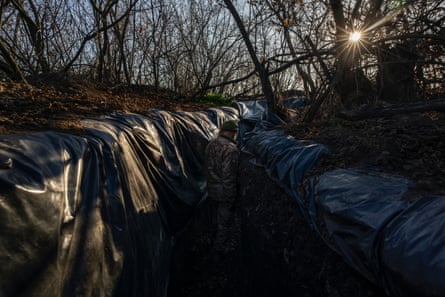
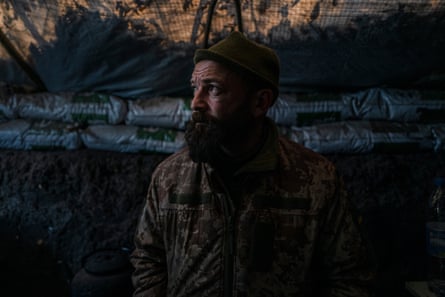
Back in the trenches, a soldier called Andriy gave a tour of his underground living quarters. There was a kitchen with a gas cylinder, stove and supplies. His lunch consisted of sardines, a pasty and grape juice; fellow soldier Valeriy tucked into potato with salo (pork fat). Nearby was a sleeping den, protected by sandbags and a log roof.
“Eight months ago I left my home in Lviv to fight,” Andriy said. “I would like the war to finish as soon as possible. Unlike the Russians I know why I’m here. We defend our land.” At the far end of the trench was a store of high-explosive fin-tailed shells. On one, someone had written: “Hi from Pasichnaya”, a tiny village in western Ukraine.
Andriy’s mortar launcher sat under a leafless tree, its barrel half concealed with a net. “I only fire when I get an order,” he said. “We’ve finished for today.” Valeriy praised the antitank weapons supplied by the UK. “They are 10 out of 10,” he said, adding: “Russia kaput!” The west must send more air defences, tanks and artillery, both men said, in order for Ukraine to kick the Russians out fully.
Victory has come at a cost. Behind their forward location is a village, smashed up and abandoned. Dogs and cats roam a glass-strewn alleyway in front of what was a primary school. Inside a mess building, Andriy’s platoon had carefully stored hundreds of plastic bottles. The Russians, by contrast, chuck rubbish in the open, making it easier for drone operators to spot them.
Anton, a member of the Ukrainian infantry, described conditions as OK. As winter approached, civilians had donated warm clothes and food, he said, with the whole of Ukraine supporting the war effort. Ukrainian troops are rotated in and out. The journey to the front involves a hair-raising drive along a dirt road and water culvert, in range earlier this week of Russian guns.
Danilo and his drone crew said their afternoon had been successful. Typically, they would destroy a Russian outpost every two or three days, he said. By Wednesday, Ukrainian troops had reportedly entered Snihurivka’s northern outskirts. Danilo added: “We would not be here if we didn’t believe in victory. Our mood is positive. We are going forward.”
Invasion by Luke Harding (Guardian Faber, £20). To support The Guardian and Observer, order your copy at guardianbookshop.com. Delivery charges may apply.
